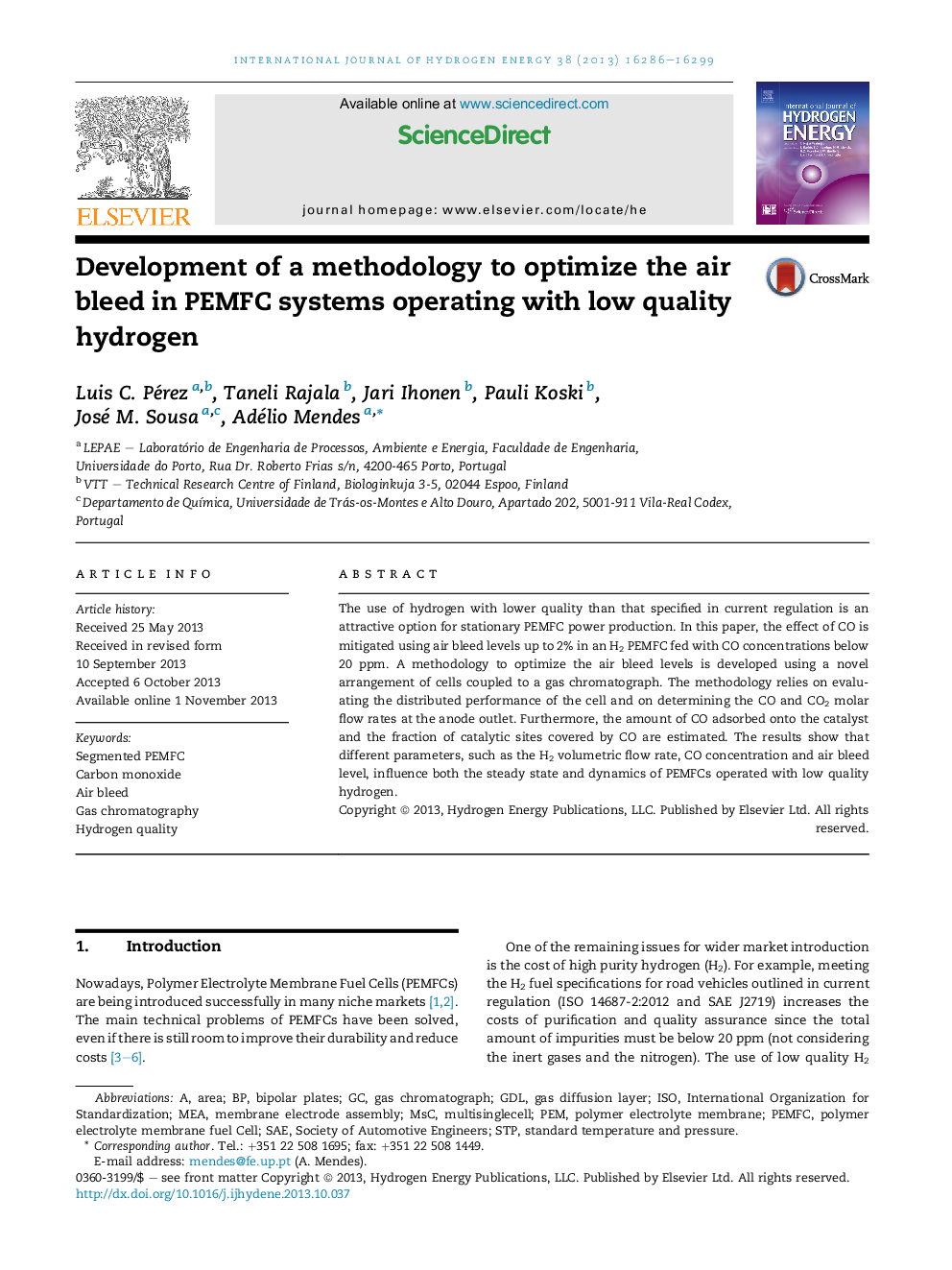| Article ID | Journal | Published Year | Pages | File Type |
|---|---|---|---|---|
| 1274191 | International Journal of Hydrogen Energy | 2013 | 14 Pages |
•A methodology to mitigate the effect of CO based on the air bleed is developed.•The air bleed is optimized for an H2 PEMFC fed with CO concentrations <20 ppm.•The anode exhaust gas composition is constantly measured using a gas chromatograph.•The CO molar balance and the fraction of sites covered by CO are estimated.
The use of hydrogen with lower quality than that specified in current regulation is an attractive option for stationary PEMFC power production. In this paper, the effect of CO is mitigated using air bleed levels up to 2% in an H2 PEMFC fed with CO concentrations below 20 ppm. A methodology to optimize the air bleed levels is developed using a novel arrangement of cells coupled to a gas chromatograph. The methodology relies on evaluating the distributed performance of the cell and on determining the CO and CO2 molar flow rates at the anode outlet. Furthermore, the amount of CO adsorbed onto the catalyst and the fraction of catalytic sites covered by CO are estimated. The results show that different parameters, such as the H2 volumetric flow rate, CO concentration and air bleed level, influence both the steady state and dynamics of PEMFCs operated with low quality hydrogen.
